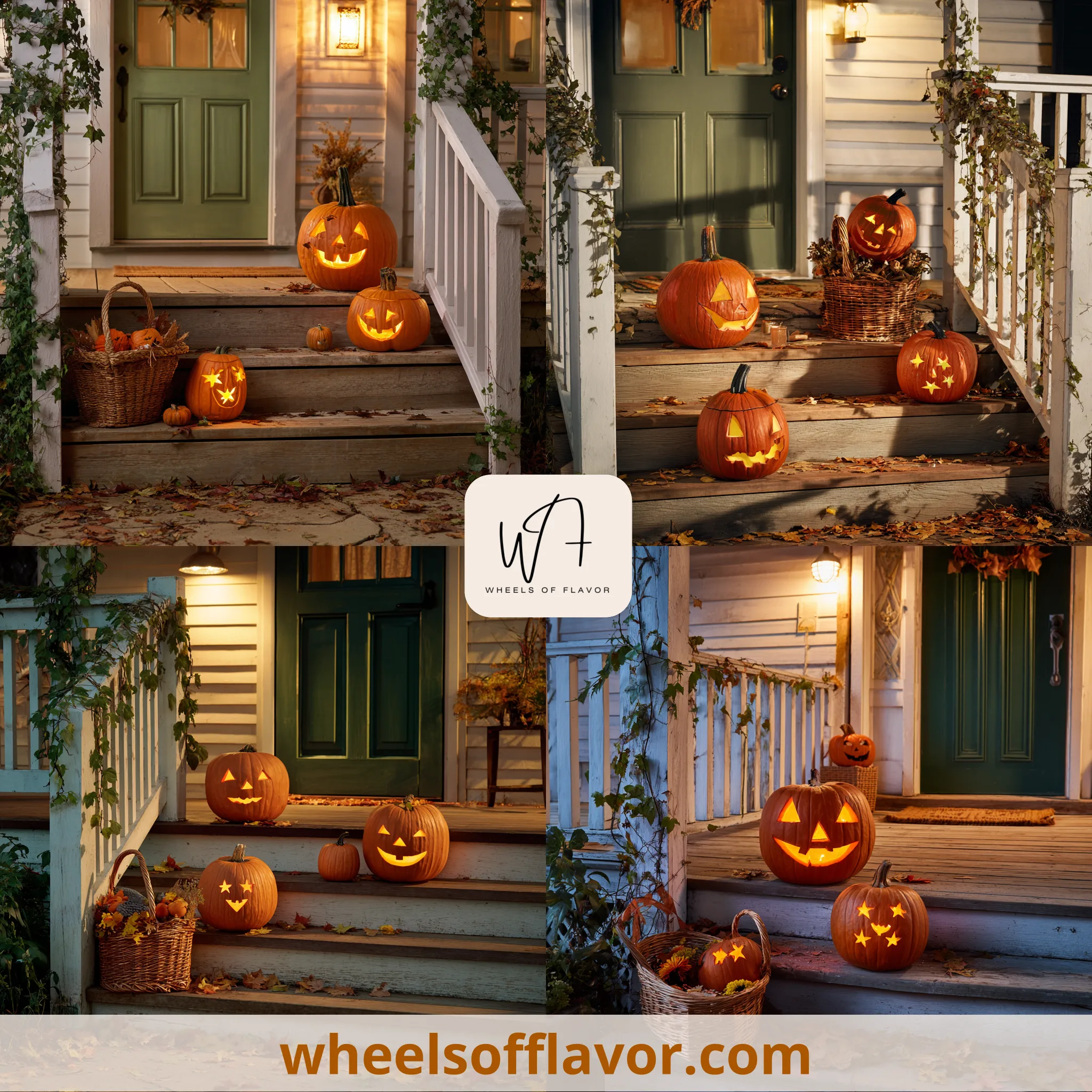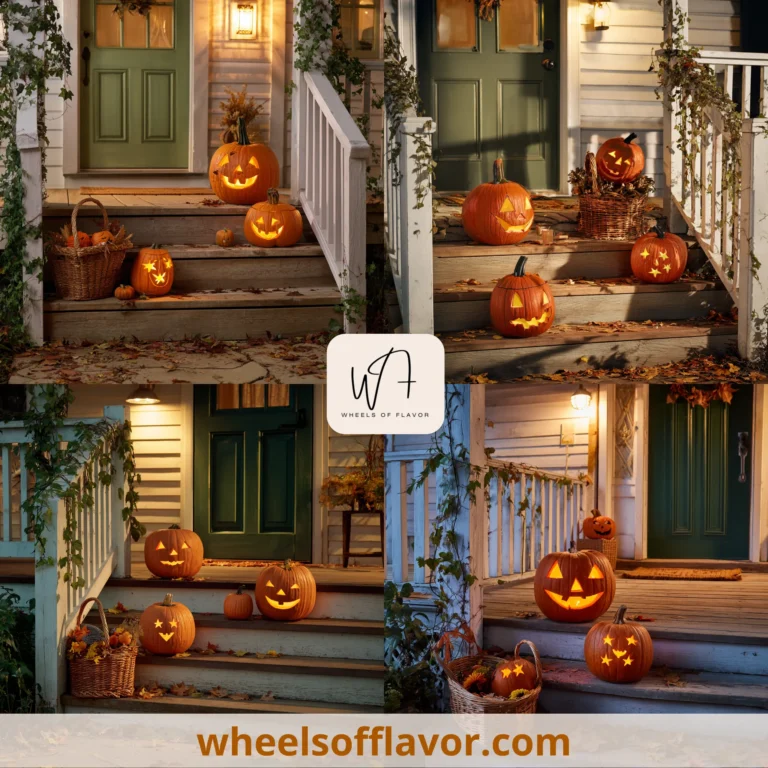
As autumn leaves begin to fall and the crisp evening air signals the arrival of Halloween, nothing captures the spirit of the season quite like glowing jack o’lanterns. These carved pumpkin masterpieces have become synonymous with Halloween celebrations, serving as both festive decorations and powerful symbols of tradition. The importance of jack o’lanterns extends far beyond simple holiday decor—they represent centuries of folklore, creative expression, and community bonding. From their origins in Irish mythology about Stingy Jack to their modern incarnation as family-friendly craft projects, jack o’lanterns have evolved while maintaining their magical appeal. The warm, flickering light emanating from a carefully carved pumpkin creates an inviting atmosphere that welcomes trick-or-treaters and sets the tone for spooky festivities. Many families consider pumpkin carving an essential Halloween ritual that brings generations together, creating lasting memories while decorating their homes. The versatility of jack o’lanterns allows them to fit any style—from simple triangle-eyed classics to intricate designs that showcase artistic talent. As you prepare for Halloween, understanding the significance and potential of these luminous creations can help you make the most of this beloved tradition. Whether you’re a seasoned pumpkin carver or trying it for the first time, jack o’lanterns offer a unique opportunity to personalize your Halloween experience and connect with neighbors through shared seasonal joy.
The History and Evolution of Jack O'Lanterns
The story of jack o'lanterns begins centuries ago in Ireland, where people originally carved scary faces into turnips and potatoes to ward off evil spirits during Samhain, the Celtic festival that influenced modern Halloween. The name 'jack o'lantern' comes from Irish folklore about Stingy Jack, a clever but deceitful man who tricked the devil multiple times. When Jack died, he was denied entry to both heaven and hell, forced to wander the earth with only a burning coal inside a hollowed-out turnip to light his way. Irish immigrants brought this tradition to America, where they discovered pumpkins made ideal canvases for carving due to their larger size and softer flesh. The evolution of jack o'lanterns accelerated in the late 19th century as Halloween became more commercialized and family-oriented. Early American jack o'lanterns typically featured simple, triangular designs, but as pumpkin carving tools improved, people began creating increasingly elaborate patterns. The pumpkin carving process itself has transformed dramatically—from basic kitchen knives to specialized carving kits with scoops, saws, and precision tools. Modern jack o'lanterns often incorporate sophisticated designs, from pop culture characters to intricate scenes, thanks to templates and electric lights replacing traditional candles. This evolution reflects broader changes in how we celebrate Halloween, blending ancient superstition with contemporary creativity. Understanding this rich history adds depth to your own jack o'lantern creations, connecting you to generations of Halloween enthusiasts who have used these glowing symbols to mark the season.
Creative Jack O'Lantern Designs for Every Skill Level
Creating stunning jack o'lanterns doesn't require artistic genius—just some planning and the right approach for your skill level. Beginners should start with simple face patterns using basic geometric shapes; triangle eyes and a jagged mouth are classic for good reason—they're easy to carve and instantly recognizable. For those with more experience, consider themed jack o'lanterns that tell a story, like a series of pumpkins showing different emotions or characters from a favorite movie. Advanced carvers can experiment with shading techniques by scraping away the pumpkin's outer skin to create gradient effects rather than cutting all the way through. Non-carving alternatives offer beautiful options too—try painting your jack o'lantern with acrylic paints for detailed designs that won't rot as quickly, or use push pins to create patterns that glow when lit from within. Family-friendly projects might include using cookie cutters and a mallet to imprint shapes, or letting children decorate mini pumpkins with markers and glitter. Seasonal patterns like autumn leaves, bats, or witches' hats can complement your fall decor beyond Halloween night. Remember that the best jack o'lantern designs consider both daylight appearance and nighttime glow—test your carving with a light inside before finalizing. For inspiration, browse pumpkin carving ideas on authoritative sites like Better Homes & Gardens, which offers free templates and safety tips. Whatever design you choose, proper planning ensures your jack o'lanterns will be the highlight of your Halloween display.
Tips for Preserving and Displaying Your Jack O'Lanterns
A beautifully carved jack o'lantern deserves to last through the Halloween season, but pumpkins naturally begin decaying once cut open. Proper preservation starts with selection—choose pumpkins that are firm, symmetrical, and free of soft spots or mold. After carving, soak your jack o'lantern in a solution of one tablespoon bleach per gallon of water for 30 minutes to kill surface bacteria; dry thoroughly before lighting. Applying petroleum jelly to the cut edges helps seal in moisture and slow shrinkage. For display, place jack o'lanterns on a elevated, stable surface protected from rain and direct sunlight—a covered porch or windowsill works well. Avoid placing them directly on grass or soil where moisture accelerates rot. Lighting choices affect both longevity and effect; LED lights generate less heat than candles, reducing dehydration and fire risk while providing consistent illumination. For a dramatic group display, arrange jack o'lanterns at different heights using crates or steps, ensuring each has adequate ventilation if using candles. Incorporate them into your overall Halloween decor by surrounding with autumn leaves, corn stalks, or other seasonal elements that complement without obscuring the carved designs. For indoor jack o'lanterns, use battery-operated lights and place on a tray to catch any moisture. Remember that carved pumpkins typically last 5-10 days; time your carving accordingly if aiming for peak freshness on Halloween night. These preservation techniques ensure your jack o'lanterns remain vibrant centerpieces throughout the spooky season.
Conclusion
Jack o'lanterns remain one of Halloween's most cherished traditions because they perfectly blend creativity, history, and seasonal spirit. From their folkloric origins to modern artistic expressions, these glowing pumpkins continue to evolve while maintaining their magical appeal. The process of selecting, carving, and displaying jack o'lanterns offers valuable opportunities for family bonding, neighborhood connection, and personal expression. As we've explored, successful pumpkin carving accommodates all skill levels—from simple designs that capture Halloween's essence to intricate masterpieces that showcase advanced technique. Proper preservation methods extend the life of your creations, while thoughtful display choices maximize their impact on your holiday decor. Looking forward, the future of jack o'lanterns seems bright with innovations like electric carving tools, sustainable pumpkin varieties, and community carving events gaining popularity. The timeless tradition of illuminating pumpkins will likely continue adapting to new technologies and trends while preserving its core seasonal magic. For your next Halloween celebration, consider how jack o'lanterns can enhance your experience—perhaps by trying a new design technique, involving more family members, or sharing your creations online to inspire others. However you choose to participate, these luminous symbols remind us that Halloween's true spirit lies in creativity, community, and the simple joy of a glowing face in the autumn darkness. For more seasonal decorating ideas that complement your jack o'lantern display, explore our guide to autumn porch decor.
Frequently Asked Questions
Q: How long do carved jack o'lanterns typically last before rotting?
Properly cared for carved jack o'lanterns usually last 5 to 10 days. Factors affecting longevity include temperature (cooler is better), humidity (avoid moisture), and preservation techniques like bleaching or refrigeration. Uncarved pumpkins can last months, but once carved, the exposed flesh begins deteriorating quickly. To maximize lifespan, carve close to Halloween, use preservation methods, and bring indoors during rain.
Q: What's the safest way to light a jack o'lantern?
LED lights are the safest option for jack o'lanterns as they produce no heat, eliminating fire risk and reducing pumpkin dehydration. If using candles, choose votives in glass holders placed on a non-flammable surface inside the pumpkin, never leave burning jack o'lanterns unattended, and keep away from flammable decorations. Battery-operated options provide flickering effects without open flames.
Q: Can you eat the pumpkin after making a jack o'lantern?
Yes, the pumpkin flesh from jack o'lanterns is edible, though carving pumpkins (often called field pumpkins) are stringier and less sweet than pie pumpkins bred for cooking. To use, scoop out the uncut flesh before carving, roast for soups or purees, and save the seeds for roasting. Avoid flesh that's been treated with bleach or shows signs of decay.

